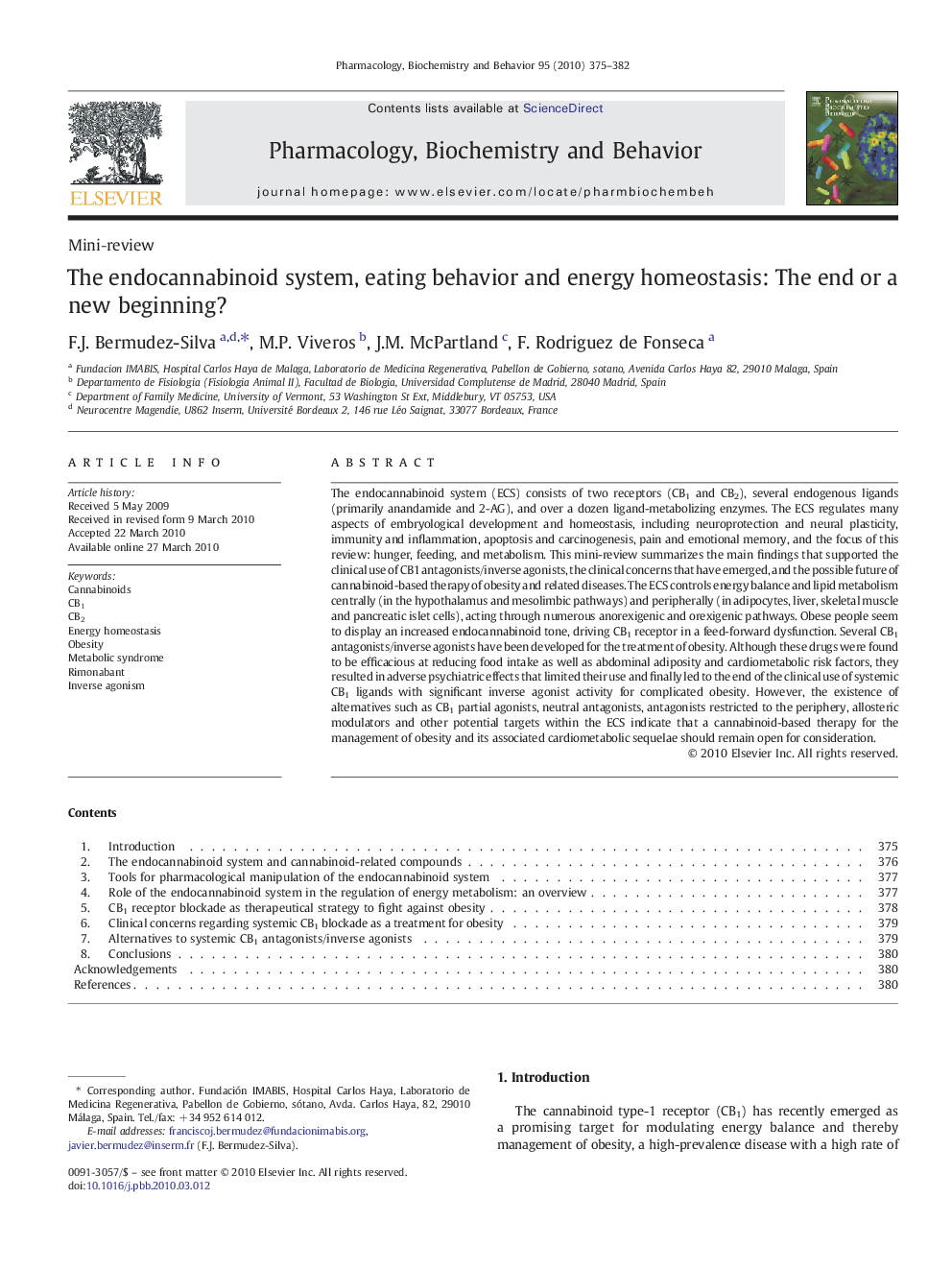| کد مقاله | کد نشریه | سال انتشار | مقاله انگلیسی | نسخه تمام متن |
|---|---|---|---|---|
| 2013124 | 1067093 | 2010 | 8 صفحه PDF | دانلود رایگان |
عنوان انگلیسی مقاله ISI
The endocannabinoid system, eating behavior and energy homeostasis: The end or a new beginning?
دانلود مقاله + سفارش ترجمه
دانلود مقاله ISI انگلیسی
رایگان برای ایرانیان
کلمات کلیدی
موضوعات مرتبط
علوم زیستی و بیوفناوری
بیوشیمی، ژنتیک و زیست شناسی مولکولی
زیست شیمی
پیش نمایش صفحه اول مقاله

چکیده انگلیسی
The endocannabinoid system (ECS) consists of two receptors (CB1 and CB2), several endogenous ligands (primarily anandamide and 2-AG), and over a dozen ligand-metabolizing enzymes. The ECS regulates many aspects of embryological development and homeostasis, including neuroprotection and neural plasticity, immunity and inflammation, apoptosis and carcinogenesis, pain and emotional memory, and the focus of this review: hunger, feeding, and metabolism. This mini-review summarizes the main findings that supported the clinical use of CB1 antagonists/inverse agonists, the clinical concerns that have emerged, and the possible future of cannabinoid-based therapy of obesity and related diseases. The ECS controls energy balance and lipid metabolism centrally (in the hypothalamus and mesolimbic pathways) and peripherally (in adipocytes, liver, skeletal muscle and pancreatic islet cells), acting through numerous anorexigenic and orexigenic pathways. Obese people seem to display an increased endocannabinoid tone, driving CB1 receptor in a feed-forward dysfunction. Several CB1 antagonists/inverse agonists have been developed for the treatment of obesity. Although these drugs were found to be efficacious at reducing food intake as well as abdominal adiposity and cardiometabolic risk factors, they resulted in adverse psychiatric effects that limited their use and finally led to the end of the clinical use of systemic CB1 ligands with significant inverse agonist activity for complicated obesity. However, the existence of alternatives such as CB1 partial agonists, neutral antagonists, antagonists restricted to the periphery, allosteric modulators and other potential targets within the ECS indicate that a cannabinoid-based therapy for the management of obesity and its associated cardiometabolic sequelae should remain open for consideration.
ناشر
Database: Elsevier - ScienceDirect (ساینس دایرکت)
Journal: Pharmacology Biochemistry and Behavior - Volume 95, Issue 4, June 2010, Pages 375-382
Journal: Pharmacology Biochemistry and Behavior - Volume 95, Issue 4, June 2010, Pages 375-382
نویسندگان
F.J. Bermudez-Silva, M.P. Viveros, J.M. McPartland, F. Rodriguez de Fonseca,